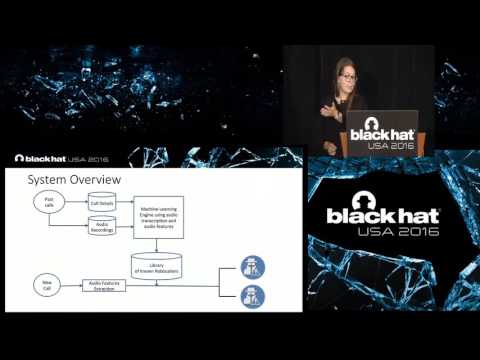Description:
Explore a comprehensive analysis of telephony-based cybercrime techniques in this Black Hat conference talk. Dive into the world of robocalling, voice phishing, and caller ID spoofing as Aude Marzuoli presents findings from a large-scale telephony honeypot study. Learn how to gather threat intelligence, track calling patterns, and develop methodologies to fingerprint bad actors hiding behind multiple phone numbers. Discover how to detect fraudulent calls within seconds using audio feature extraction. Examine the analysis of over 100,000 recorded calls and millions of call records, revealing that a small number of bad actors are responsible for the majority of spam and scam calls. Gain insights into the implications for law enforcement and businesses combating telephony fraud. Understand the advantages of telephony honeypots over online complaints, and explore system details, call transcription, natural language processing, and clustering techniques. Delve into specific scam examples, including Google-related scams and debt collector tactics. Acquire knowledge on automating scam detection and tracking to enhance fraud prevention efforts in the telephony channel.
Read more

Gathering Threat Intelligence on Telephony Scams to Detect Fraud
Add to list
#Conference Talks
#Black Hat
#Information Security (InfoSec)
#Cybersecurity
#Threat Intelligence
#Computer Science
#Fraud Detection